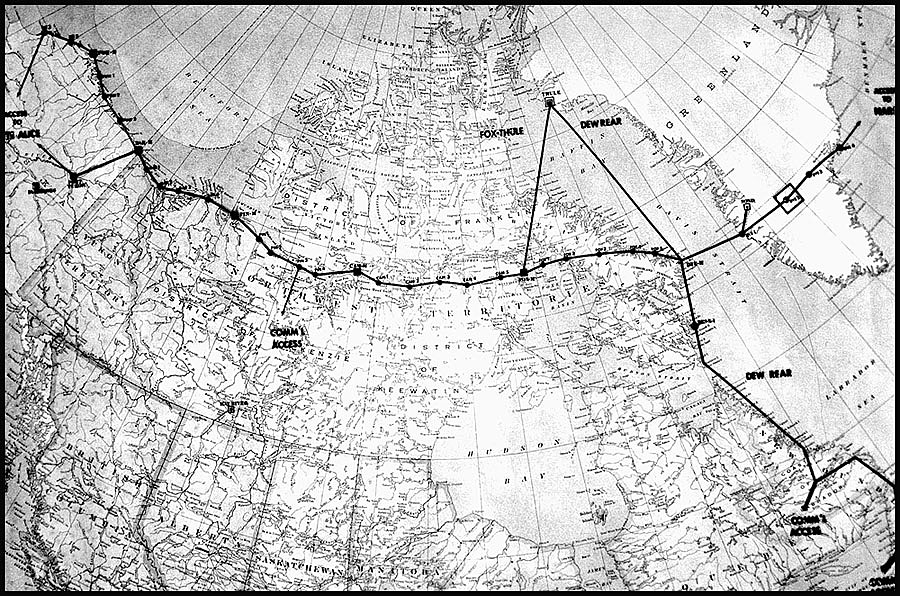|
THE DEW LINE |
|
After the Second World War a rivalry developed between the United States and its allies and the Soviet Union and its allies. This battle for power became known as the Cold War, and was geopolitical, ideological, and economic struggle between capitalism and communism. The DEW Line or Distant Early Warning Line which began on 15 February 1954, was constructed across the tundra of northern Greenland, Canada and Alaska. It was composed of a chain of sixty-three radar and communication sites which stretched 3,000 miles from the northwest coast of Alaska to the eastern shore of Baffin Island opposite Greenland. This chain of sites was constructed roughly along the 69th parallel. The DEW Line was designed and built during the Cold War as the primary air defense warning line in case of an over-the-pole invasion of North America. A surprise attack over the North Pole by enemy nuclear bombers and missiles was considered to be a real threat to the security of the United States. The
DEW East section of the DEW line, which connected Cape Dyer, Canada (DYE
Main) to DYE-1 at Sisimuit, Greenland, to DYE-2 and DYE-3 stations on the
inland ice cap, and DYE-4 at Kulusuk, was completed in 1959. |
|
|
|
|
|
|
|
